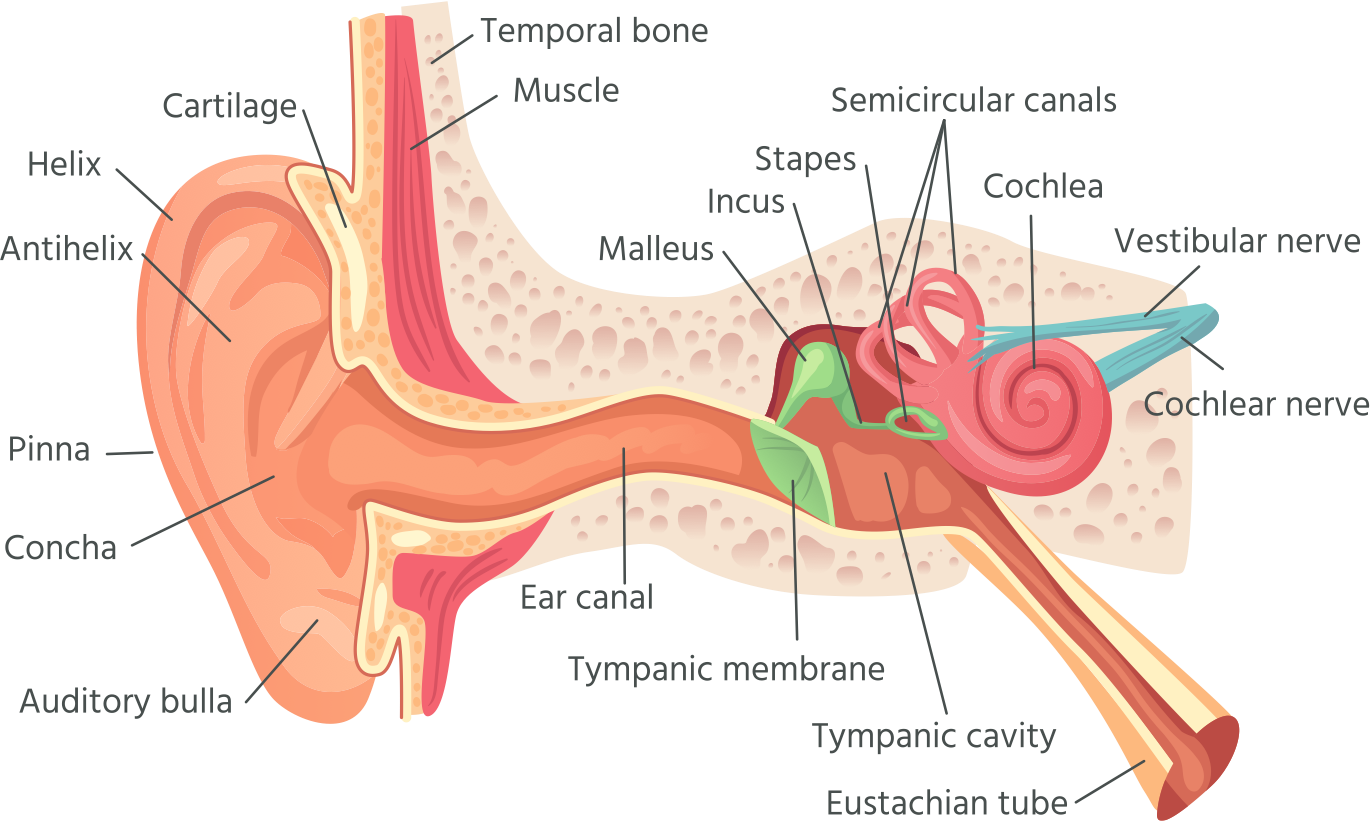We’ve all been there – our ears feel like they are stuffed full of cotton. Pressure builds and builds until it feels like Mount Vesuvius ready to blow. Heaven forbid that the dog barks, as our head might just explode.
Anatomy of the Ear
To understand what’s happening, we have to peer into the anatomy of the ear. In particular, the function of the Eustachian tube. The Eustachian tube is a canal connecting the middle ear to the nasal cavity and the back of the throat. It acts as a pressure control for the middle ear, equalizing pressure in the air outside with the pressure inside the ear.
 What Causes Blockage
What Causes Blockage
The eustachian tube is normally collapsed and will open when you chew, swallow, or yawn. If the pressure outside the body changes suddenly, such as during airplane travel or scuba diving, you may experience what feels like blockage in the ears. When outside air pressure changes suddenly, it may take a while to equalize internal pressure with outside pressure. Opening the eustachian tube allows pressure to equalize with the rest of the body.
Ear pressure equalization may sometimes not function smoothly. This is often caused by waxy buildup in the ear. Earwax has an essential function in the ear, as it traps particles and funnels them down into the throat to be destroyed by the stomach. Occasionally, however, wax builds up. When this happens, the excess wax may hinder the proper opening and closing of the eustachian tube and prevent proper drainage. This causes the ears to feel “blocked”.
There are several ways to clear pressure in your ears. The simplest is by swallowing or yawning. When you do this, you may hear a faint pop in the ears; this is a sign that the eustachian tubes are opening and pressure is equalizing. Chewing gum can help this, as it causes saliva to be generated, which leads to constant swallowing.
How to Clear Your Ears
A more direct method is known as the Valsalva Maneuver. This is done by pinching the nose shut, closing the mouth, and then blowing gently. This forces the tubes open using air pressure from the lungs. This technique is used regularly by SCUBA divers while descending to counteract the pressure of water they are immersed in.
A similar technique, the Toynbee Maneuver, is done by pinching the nose shut and closing the mouth but swallowing instead of blowing.
A combination of the above two, the Lowry Technique, has you both blow and swallow while holding the nose and mouth closed. It takes a bit of practice to master both swallowing and blowing at the same time.
It is important to pay attention to pressure in the ears. Pressure can negatively impact hearing as well as balance. If the eustachian tube is clogged for too long it can cause otitis media (AOM), a middle ear infection, or otitis media with effusion (OME). It can even cause eardrum retraction, where the eardrum seems to be receding into the ear canal. Keeping ears clean, clear, and equalized can prevent a multitude of functional problems.




